Ways to transform tyres into media

In the early 1990s, the European Union had more than 150 million vehicles. The number of tyres used in the vehicles exceeded two million tons. In the same year, 16,600 tons of used tires were generated in the Autonomous Community of the Basque Country from trucks, cars, buses, motorcycles, tractors and trailers.
The tires are rubber products. To produce half a kilo of rubber, half a barrel of crude oil is needed and the energy cost is 8,000 kcal. The tires of the cars have the highest percentage of rubber. The tires transmit driving force and, by suspension, balance the differences of the road. If a proper pressure is not carried, the vehicle consumes too much fuel, which causes harmful emissions. In developed countries, these negative consequences have been eliminated and tires, far from being an ecological problem, are an important resource.
48% of the tyres of the cars are rubber and can be converted into light hydrocarbons by breaking the polymer chains that form when burning. These hydrocarbons can be used as fuel in thermal engines. The black smoke and steel are easily recyclable for new tires. However, smoke black can also be used to produce steam or to operate turbines.
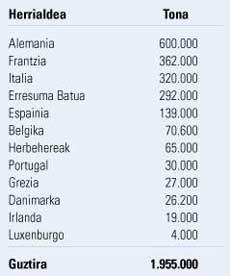
Landfills in the form of landfills
Reducing the number of tyres that are thrown daily is a serious problem, as more and more tyres are seen in landfills. In addition, tires are often discarded outside of landfills.
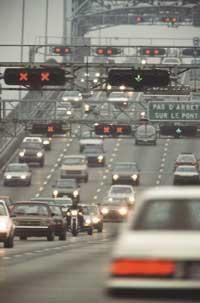
Pneumatic landfills can be a source of dangerous contagious diseases and, in case of fire, a source of air pollution.
The heaps of tires are an ideal habitat for the development of harmful insects. Some mosquitoes can cause fever and puncture encephalitis. These mosquitoes reproduce 4,000 times faster than in nature in the water marshes where the tires are. In addition, rats live on tires to protect themselves from predators, so they reproduce faster than on the outside.
Fires in landfills, in addition to assuming an ecological risk, pose a risk for human health. During the 1980s and 1990s, eleven tire fires occurred in Canada and the United States. In Hagersville (Canada), the fire lasted seventeen days; in Winchester (United States) 9,000,000 tyres were burned and it took nine months to completely shut down the fire; and in Saint-Amable (Canada) a huge disaster occurred, as 2,000,000 liters of pyrolytic oil contaminated the soil and leaked to underground water.
When burning the tires, a mechanism of combustion pyrolysis occurs. Carbon monoxide, carbon dioxide, sulfur dioxide, nitrogen, zinc and lead oxides, soot, benzene, toluene, xilene, phenols, furans and aromatic hydrocarbons (polycyclic, pyrene, benzopirene and naphthalene) can be released, all of them dangerous or potentially dangerous substances.
As a result of the combustion pyrolysis, the human being can be adversely affected in a short time, such as the deterioration caused by sulfur gas, the poisoning of carbon monoxide and the changes in the nervous system. In the long term, emissions of pollutants, benzene or polycyclic aromatic hydrocarbons can lead to lung cancer.
Phenols from tyre pyrolysis are soluble in water and can pose a risk to humans. Part of the organic vapors formed, due to high temperatures, is condensed and the rest is dispersed in the atmosphere, condensing as it cools down. For this reason, organic vapors are not dangerous for the human being, but they endanger the ecosystem. In addition, soot that conduct gases contains polycyclic aromatic hydrocarbons (PAH) that cause cancer. In addition, zinc used to prevent the oxidation of the metal that constitutes the structure of the tire is toxic to aquatic fauna. The tires that do not receive the necessary air are pirolized and generate oil spills that contaminate the rivers and underground waters that filter through the different layers of the subsoil.

Management Management Management
Regulation 10/1998, of 21 April, of waste, establishes the legal regime of the production and management of waste, applicable to all types of waste. The objective of this regulation is to promote the valorization of waste. The valorization of waste consists in the recovery of waste resources without endangering human health and without using harmful methods for the environment.

The management of industrial waste such as tires can be carried out by valorization, that is, by thermal treatment, being the most used combustion. In this way, the final residues of this treatment become non-hazardous substances for the environment.
According to the basic regulations on toxic and hazardous waste, those obtained during the production or transformation process and during their use or consumption are solid materials, liquids and gases in containers, toxic and dangerous waste. In addition, these substances, abandoned by the producer, contain substances or substances harmful to human health, natural resources or the environment.
The regulations on the protection of the atmospheric environment aim to prevent and correct air pollution and regulate the levels of air quality, the emission limits of pollutants, and the quality of fuels.
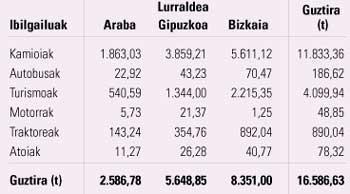
Valorization of valorization
The valorization consists of reducing the volume of the tires that accumulate due to the high risk of fire that, in addition to causing the landscape impact, a serious air pollution.
There are four ways to evaluate tyres: reuse, recovery, recycling and use as an energy source. The most striking is the last, since the tyres used will not be waste but resources.
The first operation of the used tires is crushing. Crushing reduces the volume of the tires, which reduces the transport costs to the treatment facilities. The crushing of used tires is done by mobile units, obtaining fragments between 0.6 and 15 cm. The second crushing is carried out in the tire treatment facilities and the rubber granulates are obtained.
The chopped or crushed tires reduce the risk for health that involves the proliferation of insects and/or rodents and, in case of fire, it would be easier to control than when the entire tires are stacked due to the existence of air bags that help the combustion.
In addition to crushing, the tires can also be used as fuel, that is, energy valorization can be obtained. The tires, being a mixture of organic compounds and without explosives or radioactivity, can be burned. ,
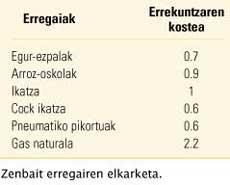
The treatment for obtaining organic waste molecules is combustion. The solid waste obtained can be included in the auxiliary solidification treatment. In this treatment, metals and other substances dangerous to the environment are blocked. To avoid additional pollution derived from combustion, compound residues requiring treatment or management will be obtained. In general, these compounds are the fumes and the liquid remains obtained in the treatment of the fumes.
The energy valuation is applied according to the fact that the low calorific power of waste represents its energy potential. The low heat power of the rubber is greater than 1.8 10 7 kcal/t and the weight of 100 tires is one ton. Taking into account that 65% of tyres are collected in the Autonomous Community of the Basque Country, generating 9,700 tons annually, the tyres used could be an important energy source for the Autonomous Community of the Basque Country.
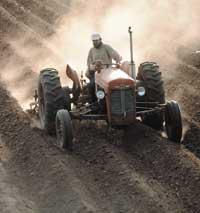
However, the most important factors for the efficiency of combustion buildings are the adequate temperature for combustion, residence time, and contact between fuel and oxygen.
The typical pneumatic combustion facilities are cement furnaces due to the high combustion temperature, the long residency times in the combustion area, and their incorporation into the steel of the tyre or the raw cement without modifying the furnace emissions. In this way, the used tires would go from being waste to being resources and would serve as a fuel auxiliary in the cement kilns.
From the environmental point of view, in the cement kilns the tire used as a fuel auxiliary presents advantages over traditional fuels (coal, fuel): the emissions of oxides (NOx) by the user of nitrogen are 10% lower than those of traditional fuels; there is no waste without fuel; the temperature and residence time are high and no furans are generated. While the percentage of tyres used is 4.7% in weight, coal is 6.23%.
Companies producing wood and paper pasta, in addition to wood waste, save a lot of money using used and crushed tires as fuel. Sometimes it is required to be without wire so that the process is not expensive, but a saving is achieved.
The use of wire free tires is mandatory when the company sells powders for use as a fertilizer, as farmers demand dust without steel. The emissions generated by the combustion are similar to those of the burning of wood residues, but the emission of polar aromatic hydrocarbons does not increase. However, zinc emission increases slightly but within the allowed limits.
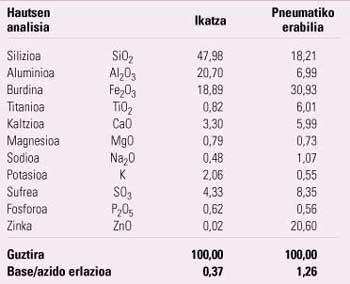
Production of steam and/or electric current
The main projects of electric power production facilities using crushed tires or tires have been developed in California. With the use of tyres used as an energy source and the sale of the rest for another application, the maximum performance was obtained. In 1987 the company Oxford energy Co. built in Modesto (California) the first plant with a capacity of 14 MW, later the 26 MW plant in Connecticut and finally the 26 MW plant in Nevada.
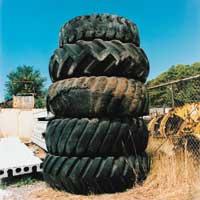
In these systems, combustion occurs at 1,800 °C. During full combustion, whole or crushed tires are subjected to high temperatures on a metal bark grill without deformations. The high temperature allows the full combustion of the tires, with which the emission of dioxins and furans is minimal. The design of the grill has been made to introduce the air to the upper and lower part. As a result, the combustion is done properly and the grill is cooled. The grill throws the powders to the conductive tape and are collected in special containers for later sale as a by-product.
The overheated combustion gases are driven to the boiler to produce hot steam. Each burner has its own boiler and to generate electricity, they supply steam to the turbine generator system. In order to maintain the emission values in the allowed limits, the installation of electric power also has systems of control of the pollution, that is, of desulfurization of gases of outlet, thermal control of NOx and filter of sleeves.
As for the recovery of energy, it has been observed that the production of steam is greater and cleaner than that obtained in the use of coal.






